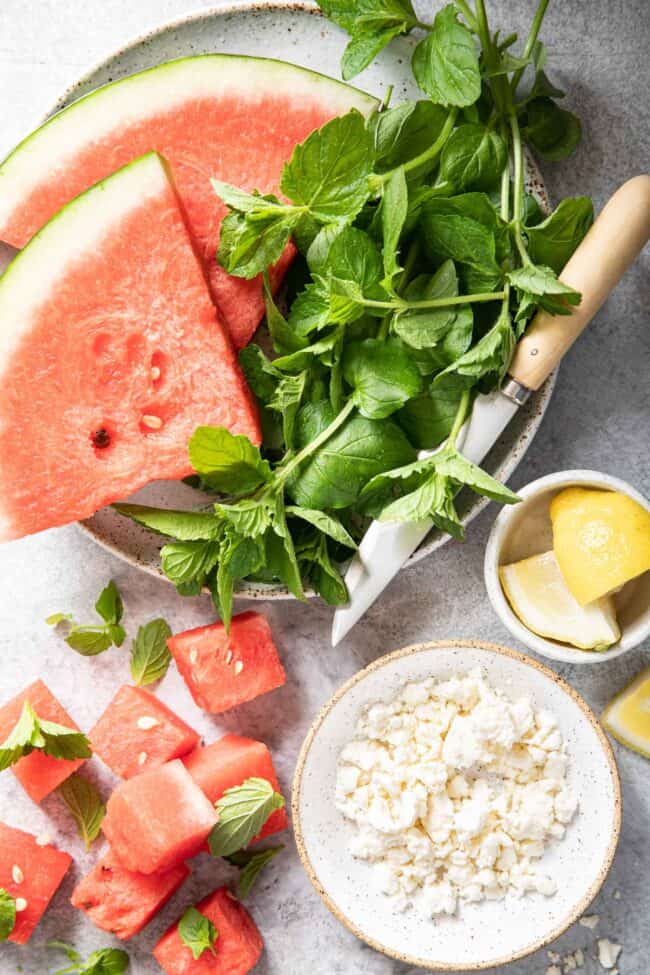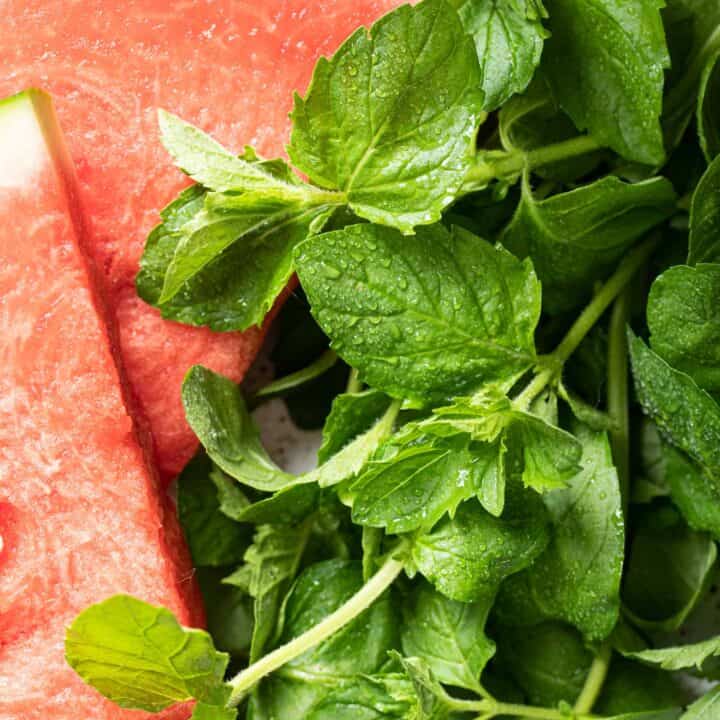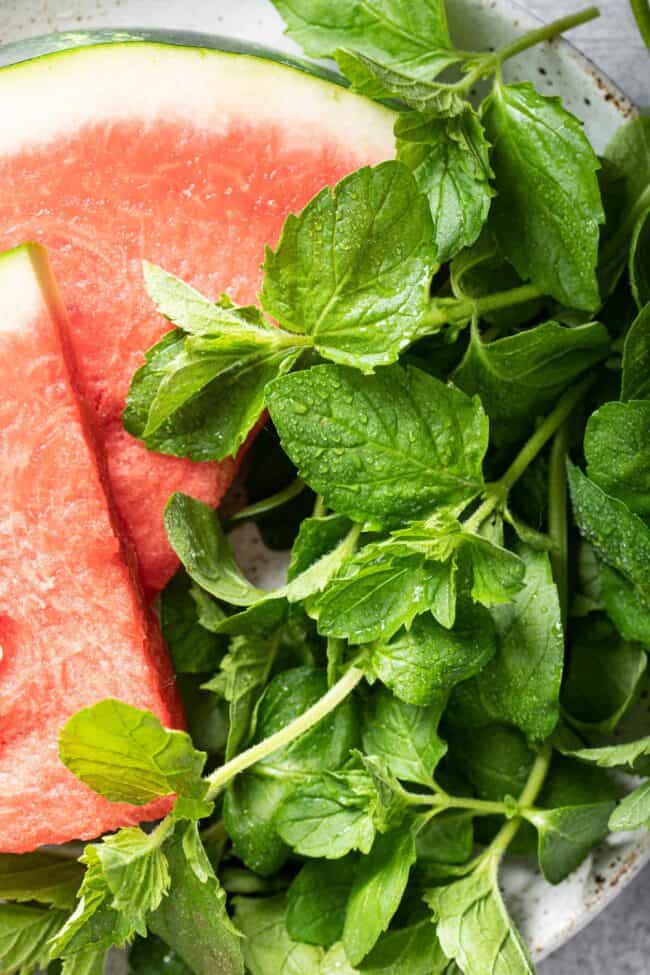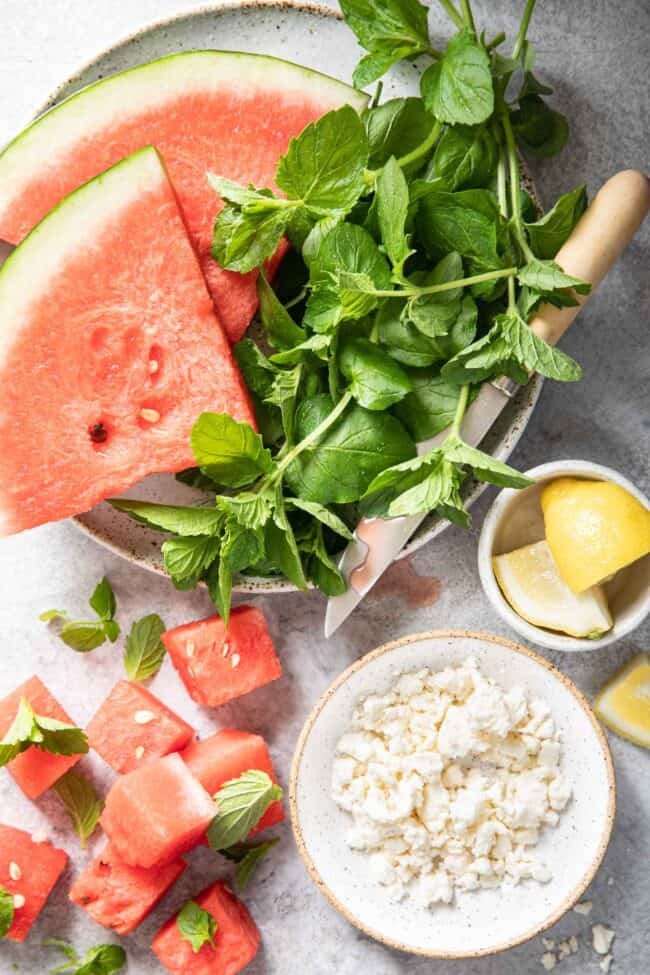Mint Substitute
Need a good substitute for mint leaves? Fresh mint has a unique flavor that’s hard to replace. But if you’re in a pinch and need a replacement, here’s the best fresh mint substitutes you can use.

If you’re making a recipe that calls for mint and you don’t have any on hand, there’s a few substitutes for mint leaves that you can use to replace it, though the flavor won’t be quite the same.
What is Mint?
Mint (Mentha) is an aromatic herb in the Lamiaceae family, which is comprised of more than 25 different varieties grown around the world, including peppermint, spearmint and oregano. This fragrant herb brings vibrant flavors to sweet and savory dishes and beverages. It’s often added to Mediterranean and Greek foods. Mint is most often used as a flavoring in breath mints, candy and other foods, and it can be brewed as a caffeine-free tea. In different parts of the world mint has been used to calm upset stomachs, unclog sinuses, fight bacterial infections, calm anxiety, decrease symptoms of allergies and it has been served as an after-meal digestive aid.
Peppermint vs Spearmint
Spearmint and peppermint are the most popular types of mint used in cooking. It’s almost always spearmint that is sold in grocery stores even though they usually aren’t labeled. Spearmint leaves are typically longer and more pointed and peppermint leaves are usually smaller and more rounded. The concentration of menthol is much higher in peppermint (40%) than it is in spearmint (0.5%). Since peppermint has a more intense mint flavor, it is used more widely is desserts, candies and cocktails. The flavor of spearmint is more mild, fruit and slightly refreshing. It’s used in dishes where you just want a hint of mint flavor.
Best Mint Substitutes
1. Basil
Basil has a slightly sweet and peppery flavor that can be used as a substitute for mint leaves in certain dishes. Use fresh basil in a 1:1 ratio for fresh mint and adjust to taste.
2. Parsley
Flat-leaf parsley leaves (also called Italian parsley) is used mostly for cooking while curly parsley is used mostly as a garnish. Flat-leaf parsley can be used as a substitute for mint. Use parsley in a 1:1 ratio for fresh mint and adjust to taste.
3. Cilantro
Cilantro can be used as a substitution for mint in savory dishes. Use half the amount of cilantro to substitute mint with and adjust to taste.
4. Oregano
Oregano has an earthy flavor that can be used as a substitution for mint in savory dishes. Use half the amount of oregano to substitute mint with and adjust to taste.
5. Lemon Verbena
Lemon verbena leaves have a refreshing citrus flavor that can be used as a substitution for mint in savory and sweet dishes, teas and drinks. Use half the amount of lemon verbena to substitute mint with and adjust to taste.
6. Lemon Balm
Lemon balms has a mild lemon and minty flavor that can be used as a substitution for mint in salads, desserts and drinks. Use lemon balm in a 1:1 ratio for fresh mint and adjust to taste.
7. Tarragon
Tarragon has a mild anise (licorice) flavor that can be used as a substitution for mint in salads and savory dishes. Use half the amount of tarragon to substitute mint with and adjust to taste.
8. Arugula
Arugula has an earthy peppery flavor that can be used as a substitution for fresh mint in salads and some savory dishes. Use arugula in a 1:1 ratio for fresh mint and adjust to taste.
How to Choose The Freshest Mint
Look for vibrant colored perky greens. Avoid limp leaves and leaves that are yellowing or have dark spots.
How Long Does Fresh Mint Last?
Fresh mint leaves will last for 1-2 weeks if properly stored.
Can I Use Dried Mint Instead of Fresh?
Fresh mint has smooth leaves with a sweet aroma and menthol flavor. Dried mint has a rougher texture with a slightly bitter flavor and sharper aroma. One tablespoon fresh mint = 1 teaspoon dried is a general conversion ratio to start with. It’s good practice to start out by using a small amount of a dried mint then adjust to taste.
What Does Mint Taste Like?
Fresh mint has a slightly sweet flavor with a cooling menthol sensation. It can be a strong tasting herb that is often used as a garnish or to compliment flavors in other foods, but if too much is added it can overpower the other flavors in a dish.
What Parts of Mint Do You Use?
Mint leaves and stems are both edible, but the leaves are the richest and most flavorful part. Stems with their woody texture can be added to pesto and other blended dishes, or strained for tea.
What’s The Best Way To Store Mint?
It’s best to store fresh mint in the refrigerator with the stems still attached. Place the stems in a glass of water and loosely cover the leaves with a plastic bag. If the stems have been cut away, then wrap the leaves in a damp paper towel and place them in a plastic bag leaving the end open for circulation. Mint with stems still attached can last up to 1 week and without the stems it’ll last between 3 to 5 days.
How Do You Use Fresh Mint?
Mint adds pop of flavor to many dishes, but it tends to lose its flavor when cooked for a long period of time. Adding it at the end of cooking or sprinkling it on top of your dish after it has already been cooked will add the most flavor to your dish.
10 Ways To Use Fresh Mint
These are some of my favorite ways to use fresh mint leaves.
- Salads: Add fresh mint leaves to salads like this Tabbouleh Salad, Summer Melon Salad, Mediterranean Chickpea Cucumber Salad, Greek Chopped Salad, Greek Chicken Bowl and Herbed Red Potato Salad.
- Salad Dressings: Add it with a mix of other herbs (like parsley and cilantro) to salad dressings like this Cleansing Lemon Herb Vinaigrette.
- Infused Water: Add it to plain water, sparkling water, lemon water or in a glass of water with slices of fresh fruit, berries and cucumber to make Infused Water.
- Spritzers and Mocktails: Muddle fresh mint to make spritzers and mocktails like this Sparkling Blackberry Mint Spritzer.
- Garnish: Use sprigs of fresh mint as a garnish to make your drinks look pretty like this Pink Lemonade, Cranberry Juice Detox, Hibiscus Tea, Mango Dragonfruit Refresher and Lemonade.
- Tea: Use fresh leaves to make mint tea and add it with turmeric and fruit to make a healthy and refreshing Infused Iced Tea.
- Pesto: Add fresh mint leaves to add a pop of flavor to basil pesto or arugula pesto.
- Tzatziki: Add fresh or dried mint to tzatziki or simply garnish your tzatziki with fresh mint leaves.
- Burgers: Add it to ground turkey to make Greek Turkey Burgers.
- Desserts: Blend it with fresh lime juice and water to make Mint Lime Popsicles.
More Resources
- Sour Cream Substitute
- Garlic Substitute
- Cinnamon Substitute
- Bay Leaf Substitute
- Basil Substitute
- Rosemary Substitute
- Cilantro Substitute
- Tomato Sauce Substitute
- Tomato Paste Substitute
- How Much Juice in One Lime
- How Much Juice in One Lemon
- How to Zest a Lemon
- How to Freeze Spinach
- How to Freeze Tomatoes
- How to Cut a Pomegranate
- How to Store Tomatoes

Mint Substitute
Need a good substitute for mint leaves? Fresh mint has a unique flavor that's hard to replace. But if you're in a pinch and need a replacement, here's the best fresh mint substitutes you can use.
Ingredients
- 1 tablespoon fresh basil
- 1 tablespoon fresh parsley
- 1 tablespoon cilantro
- 1 tablespoon oregano
- 1 tablespoon lemon verbena
- 1 tablespoon lemon balm
- 1 tablespoon tarragon
- 1 tablespoon arugula
Instructions
Basil has a slightly sweet and peppery flavor that can be used as a substitute for mint leaves in certain dishes. Use fresh basil in a 1:1 ratio for fresh mint and adjust to taste.
Flat-leaf parsley leaves, also called Italian parsley) is used mostly for cooking while curly parsley is used mostly as a garnish. Flat-leaf parsley can be used as a substitute for mint. Use parsley in a 1:1 ratio for fresh mint and adjust to taste.
Cilantro can be used as a substitution for mint in savory dishes. Use half the amount of cilantro to substitute mint with and adjust to taste.
Oregano has an earthy flavor that can be used as a substitution for mint in savory dishes. Use half the amount of oregano to substitute mint with and adjust to taste.
Lemon verbena leaves have a refreshing citrus flavor that can be used as a substitution for mint in savory and sweet dishes, teas and drinks. Use half the amount of lemon verbena to substitute mint with and adjust to taste.
Lemon balm has a mild lemon and minty flavor that can be used as a substitution for mint in salads, desserts and drinks. Use lemon balm in a 1:1 ratio for fresh mint and adjust to taste.
Tarragon has a mild anise (licorice) flavor that can be used as a substitution for mint in salads and savory dishes. Use half the amount of tarragon to substitute mint with and adjust to taste.
Arugula has an earthy peppery flavor that can be used as a substitution for fresh mint in salads and some savory dishes. Use arugula in a 1:1 ratio for fresh mint and adjust to taste.
Notes
How To Store Mint?
It's best to store fresh mint in the refrigerator with the stems still attached. Place the stems in a glass of water and loosely cover the leaves with a plastic bag. If the stems have been cut away, then wrap the leaves in a damp paper towel and place them in a plastic bag leaving the end open for circulation. Mint with stems still attached can last up to 1 week and without the stems it'll last between 3 to 5 days.
Nutrition Information:
Yield:
1Serving Size:
1Amount Per Serving: Calories: 32Total Fat: 1gSaturated Fat: 0gTrans Fat: 0gUnsaturated Fat: 0gCholesterol: 0mgSodium: 10mgCarbohydrates: 7gFiber: 3gSugar: 1gProtein: 2g
theharvestkitchen.com attempts to provide accurate information, however, this nutritional information is provided as a courtesy and is an estimate only. The nutritional information provided comes from online sources and calculations. See full disclaimer on About page.





